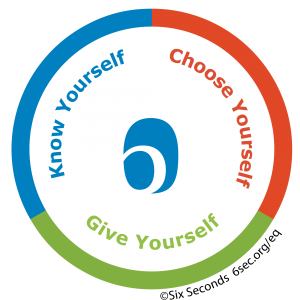by Michael Miller
Goals, purpose and meaning are often used interchangeably, but there are key differences between these concepts. Understanding how they differ from each other – and why each is important – can help us create alignment between what we do, why, and the impact we want to have. Those three elements are, in essence, the definitions of goals, meaning and purpose.
So what is the difference between goals and meaning and purpose? First, let’s define each. Then we’ll go into examples and how you can use these three definitions:
Goals are what we wish to achieve; specific and measurable objectives. They can be focused on the short-term or the long-term, and can be personal or professional, but the common link is that goals are what we do (or wish to do). We set goals for diet and exercise, relationships, career advancement, quarterly profits and much more. In Western society, goals receive by far the most attention of goals, purpose and meaning, which as we’ll discuss below, may be problematic.
- Goals What we do (or wish to do)
Meaning is the emotional significance of what we do; the importance we ascribe to something. It’s why we do what we do. Meaning doesn’t just exist on its own, it’s something we create and feel, and it’s closely linked to motivation.
- Meaning Why we do it
Purpose is the cumulative effect of meaningful goals. Purpose is less tangible; we define purpose as a long-term aim or guiding principle based on meaning. It’s the impact we want to have on the world.
- Purpose The impact we want to have
Purpose, meaning and goals can become a virtuous cycle, a kind of feedback loop: Our purpose helps us create goals, and in turn our goals help us do what’s meaningful. Over time, those meaningful steps add up to something larger: our purpose. Having a strong sense of purpose has been linked to a whole host of mental and physical health benefits. Purpose is a compass, and goals are the actions we take to move in the right direction.
How To Use Emotional Intelligence for Goals, Meaning & Purpose
We asked for examples on Six Seconds’ LinkedIn page and emotional intelligence practitioners shared insights on their own experiences of meaning and purpose — and the role of emotions. One key takeaway: The relationship between goals, meaning and purpose is non-linear, these three concepts reinforce one another.
One path is for meaning to fuel purpose. For example, imagine you have an experience that feels meaningful, like volunteering at a local food bank. You can then use that data to clarify your bigger purpose – the impact you want to have on the world. Have you had an experience like this?
Others identified purpose coming first, and from purpose, meaningful goals:
“For me, I found my purpose and then I gave it meaning,” says Advanced EQ Facilitator Larisa Sohorca. “Purpose is more aspirational and I’m taking a journey towards it through meaningful and intentional choices and steps.”
If you’re feeling stuck, though, how can you engage with meaningful goals and a bigger purpose?
An Action Plan for Meaningful Goals and Purposeful Leadership
The Six Seconds Model of Emotional Intelligence offers a process framework for putting EQ into action. We can apply this to the challenge of setting goals that are aligned with meaning and purpose. The model has three steps: Know Yourself, Choose Yourself, Give Yourself – here are three questions to ask yourself to make your goals work in alignment with your meaning and purpose:
1. Know Yourself
Know Yourself is about self-awareness, collecting emotional data.
Ask yourself: When do you experience big feelings? (big feelings tell you about something that matters… what’s the opportunity you’re seeking or what are you protecting?)
- Note: Doing this step requires a strong emotional vocabulary (here’s how to grow your emotional literacy)
 2. Choose Yourself
2. Choose Yourself
Choose Yourself is about choice, doing what you mean to do. This step requires knowledge about your values and what motivates you.
Ask yourself: What gives you energy? (intrinsic motivation is about being energized and driven by personal values and commitments rather than by external forces)
3. Give Yourself
Give Yourself is about vision, connecting to others and to a bigger purpose.
In the Chinese version of our model, this step is translated as 自我超越. It literally means: Connecting beyond yourself. That’s when meaning & purpose come together with empathy. Think of a time when you felt that sense of connection beyond yourself — where your choices were significant because they were part of something bigger.
Ask yourself: How did it feel to be connected to something bigger than yourself?
You can shorten these questions and ask yourself throughout the day:
What am I feeling?
What choices do I have?
What really matters?
A key point: Goals are about action — doing. But meaning and purpose are about being. When we become overly focused on the action, we can lose sight of why that action is important, and where it’s leading in the long term. When you balance goals, meaning and purpose you do what needs to be done… in a way that is significant… so that the world is a better place.
Articles you may like
If you like this blog post, you may also like these articles:
- Pursue Noble Goals in the Six Seconds Model of EQ - July 29, 2023
- Increase Empathy in the Six Seconds Model of EQ - July 26, 2023
- Exercise Optimism - July 24, 2023

Commentsomething very useful to apply in life
It is an eye – opening Article
Thank you